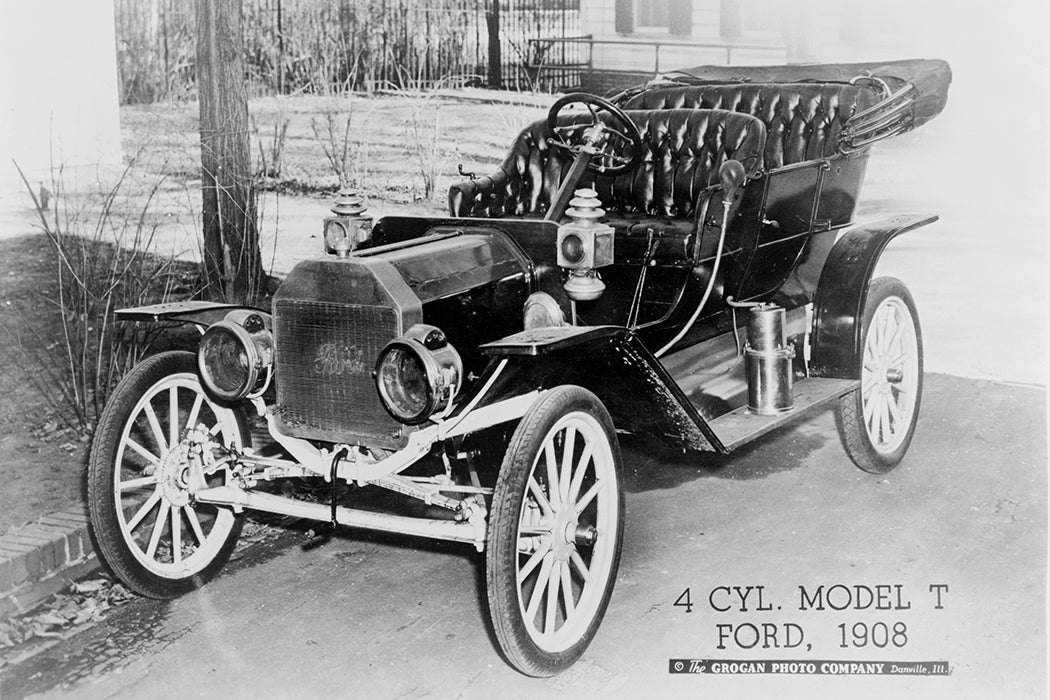In October of 1908, the Ford Model T was introduced. Henry Ford transformed the world with the mass-produced automobile, ushering in an era of consumer-oriented capitalism. At the same time, he professed a belief in 19th-century rural Protestant values, scorning alcohol, smoking, rolled stockings, jazz, labor unions… and Jews.
Between 1920 and 1927, Ford’s newspaper, the weekly Dearborn Independent, which was distributed through Ford dealers and sent free to schools and libraries around the country, published 90 anti-Semitic articles, later collected and distributed as a book called The International Jew. As Victoria Saker Woeste, author of Henry Ford’s War on Jews and the Legal Battle Against Hate Speech, points out, the first article staked out the familiar anti-Semitic trope of “The Jew” as “the world’s enigma. Poor in his masses, he yet controls the world’s finances,” becoming “the power behind many a throne.” Much of this was supposedly based on the Protocols of the Elders of Zion, a notorious forgery produced by the Tsar’s secret police, claimed to be the blueprint for the international Jewish conspiracy to take over the world. Woeste’s article puts this in the context of the 1920s, a time of “renewed racial tribalism” and a “wasp’s nest of xenophobia, restrictive immigration policies, and racial divisions,” which also saw the KKK’s greatest prominence.
As Woeste explains, the Dearborn Independent even published the names of Jewish Americans who it claimed were involved with the “conspiracy,” but national Jewish organizations were leery of challenging Ford. Finally, without any support, a lawyer named Aaron Sapiro, who was known for setting up agricultural cooperatives, sued Ford for defamation in 1925. Ford’s lawyers, including a U.S. senator, delayed the trail for two years, and Ford himself hid from a subpoena for 16 months. Then, while Ford was in a hospital, supposedly prevented from testifying by a road accident, his private security force engineered a mistrial.
Perhaps for this reason, Henry Ford was one of Adolf Hitler’s favorite Americans, the only American mentioned in Mein Kampf (as the “single great man” of the “American Union” standing up against “the Jews”). Ford was also the first American to be given the Grand Cross of the German Eagle, the Nazi honor for non-Germans, on the occasion of his 75th birth in 1938.
Years later, Ford issued an apology for the anti-Semitic bile printed in his paper, claiming he hadn’t been paying enough attention to what was being published. It was little known at the time, but this apology—which helped restore Ford to his iconic status—was drafted by Louis Marshall, the president of the American Jewish Committee. Woeste argues that Marshall squandered what Sapiro’s lawyers had established in the trial, namely “Ford’s personal responsibility” for the Independent’s years-long campaign of hate.
Newsletter
Marshall and Ford, Woeste reveals, had worked out a personal deal to keep The International Jew from being republished, but after Marshall died in 1929, the non-binding agreement fell by the wayside. Ford’s sanctioned anti-Semitic conspiracy theories continued to be published around the world, becoming particularly popular in Germany after 1933. As Woeste concludes, “Ford’s request that Marshall write his apology presented the lawyer with what he believed was the chance to rewrite the master narrative of American anti-semitism, but Ford never lost control of the outcome.”







